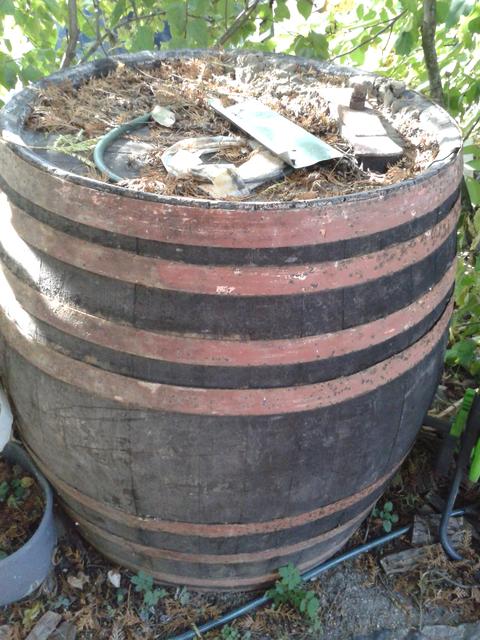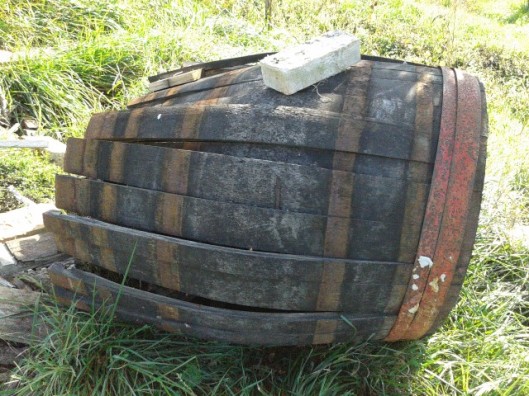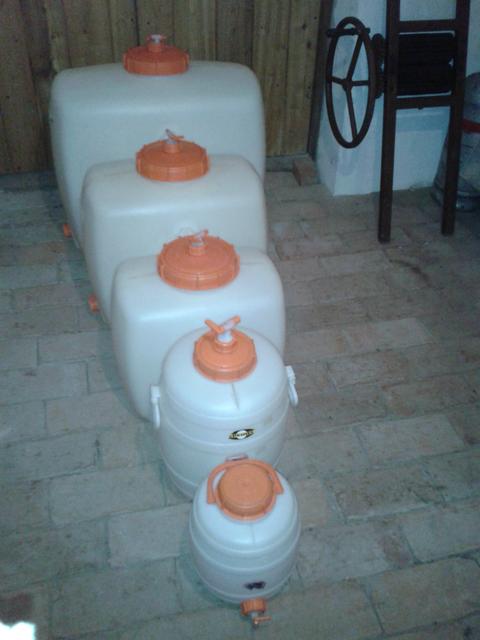You are using an out of date browser. It may not display this or other websites correctly.
You should upgrade or use an alternative browser.
You should upgrade or use an alternative browser.
What order do you do the following?
- Thread starter JPD
- Start date

Help Support Winemaking Talk - Winemaking Forum:
This site may earn a commission from merchant affiliate
links, including eBay, Amazon, and others.
RonObvious
Senior Member
- Joined
- Nov 21, 2016
- Messages
- 123
- Reaction score
- 32
For me, oaking would definitely be first and filtering would definitely be last. But blending and back-sweetening could be a little more tricky. It would seem to make sense to blend first and then adjust final sweetness, but I don't think I've ever blended a wine in which one component was back-sweetened, so I'll be curious to see what others say.
- Joined
- Oct 24, 2016
- Messages
- 333
- Reaction score
- 414
IMHO sweetening, oaking (& tannins) and blending are all tools to manipulate the flavor profile and can be used in any order and in multiple steps. Filtering would be the final step before bottling. I'm very cautious of over oaking or sweetening any batch and will often only add 60%-75% of what my bench testing indicates. Then, I taste again at the next 3 month racking and make further adjustments. Since I am usually sitting on most batches through 3 rackings this provides multiple opportunities to keep tweaking and making adjustments as the wine matures a bit. Blending is typically done near the end of the process, but I've blended at the first racking and then worked on the oak, tannins and sweetness in later rackings. There are no hard rules . . . the goal is to end up with the best tasting wine you can given the input material. The process is just how you get there.
balatonwine
The Verecund Vigneron
Back sweetening
Oaking
Blending
Filtering!
I don't do any of those.
They all change the wine. I want my wine to "be what it is".
But that is just me of course. Each to their own.

I don't do any of those.
They all change the wine. I want my wine to "be what it is".
But that is just me of course. Each to their own.
Kind of surprised to hear you say that. Back Sweetening and filtering I can understand but I'm surprised you don't blend or oak, do you not use barrels?
balatonwine
The Verecund Vigneron
Kind of surprised to hear you say that. Back Sweetening and filtering I can understand but I'm surprised you don't blend or oak
I grow and try to make mostly fruit forward varietal vintage white wines. So no, no blending. Not even for the same wine between years. And I think oaking many such white wines is a bad idea, as one then looses the wine's unique varietal aromatics to the wood. And I am very much after the very specific aroma from the varietal, as it is grown here under local conditions at a vintage year to year (its Terroir). So I don't want to mask those very important aspects with external influences like wood or blending. Some wines, like Chardonnay, are exceptions (they benefit from oak). But I don't make oak beneficial wines like Chardonnay.
In short.... my personal wine making style.
, do you not use barrels?
When I bought my winery, it came with many oak barrels from sizes from 12 L to 800 L (yes, very large). But they were all beyond their useful life span (and not ideally cared for). And ended up as firewood mostly


Today, I mostly use HDPE barrels from 30 L to 200 L in size, and am considering getting some PP variable capacity tanks.

Last edited:

$155.96 ($155.96 / Count)
Winexpert Revelation Napa Cabernet Sauvignon 3 Gallon (Limited) Wine Ingredient Kit
Discount Hydroponics LLc

$22.99
$40.00
The Sommelier's Atlas of Taste: A Field Guide to the Great Wines of Europe
Amazon.com

$29.99 ($15.00 / Count)
JILLMO Fermentation Jar, 1 Liter Fermentation Jar with Fermenting Weights and Airlocks, Pack of 2
Raiser Co., Ltd

$169.50 ($169.50 / Count)
Wine Ingredient Kit - CRU SELECT Australia Style Chardonnay
Bridgeview Beer and Wine Supply

$14.29
$16.99
FastRack Glass Wine Fermenter Includes Airlock, 1 gallon Capacity, clear (B00BEYREIW), 1 Count (Pack of 1)
Hobby Homebrew

$29.99 ($15.00 / Count)
$41.80 ($20.90 / Count)
2 Pack 1 Gallon Large Fermentation Jars with 3 Airlocks and 2 SCREW Lids(100% Airtight Heavy Duty Lid w Silicone) - Wide Mouth Glass Jars w Scale Mark - Pickle Jars for Sauerkraut, Sourdough Starter
Qianfenie Direct

$175.50 ($175.50 / Count)
Wine Ingredient Kit - CRU SELECT Italian Style Sangiovese
Bridgeview Beer and Wine Supply

$14.80
$24.00
The Geography of Wine: How Landscapes, Cultures, Terroir, and the Weather Make a Good Drop
Amazon.com

$74.99 ($74.99 / Count)
Delirious Trembles Belgian Golden Strong Ale, Beer Making Extract Kit
Boomchugalug

$169.50 ($169.50 / Count)
Wine Ingredient Kit - CRU SELECT French Style Merlot
Bridgeview Beer and Wine Supply

$175.50 ($175.50 / Count)
Wine Ingredient Kit - CRU SELECT Chilean Style Malbec
Bridgeview Beer and Wine Supply

$128.50 ($128.50 / Count)
Cru International - Washington Merlot Style Wine Ingredient Kit
Bridgeview Beer and Wine Supply

$24.34
$36.99
Jajadeal Plant Tying Machine Tool for Grapes, Raspberries, Tomatoes and Vining Vegetables, with 20 Rolls Tapes, 10000pcs Staples and Replacement Blades (Green)
Jajadeal Official Store US

$15.99 ($4.00 / Count)
$24.99 ($6.25 / Count)
MEKOLIFE 4-Pack 10 Gallon Grow Bags with Window to Harvest - Potato Grow Bags with Flap and Handles - Thickened Fabric Pots - Large Grow Bags - Tomato Garden Vegetables Grow Bags
LING LI
I grow and try to make mostly fruit forward varietal vintage white wines. So no, no blending. Not even for the same wine between years. And I think oaking many such white wines is a bad idea, as one then looses the wine's unique varietal aromatics to the wood. And I am very much after the very specific aroma from the varietal, as it is grown here under local conditions at a vintage year to year (its Terroir). So I don't want to mask those very important aspects with external influences like wood or blending. Some wines, like Chardonnay, are exceptions (they benefit from oak). But I don't make oak beneficial wines like Chardonnay.
In short.... my personal wine making style.
When I bought my winery, it came with many oak barrels from sizes from 12 L to 800 L (yes, very large). But they were all beyond their useful life span (and not ideally cared for). And ended up as firewood mostly


Today, I mostly use HDPE barrels from 30 L to 200 L in size, and am considering getting some PP variable capacity tanks.

I didn't realize you made primarily whites. I've only made a few whites and never oaked them either but some do. As you said it's a personal style.
balatonwine
The Verecund Vigneron
My local climate is not ideal for red wines (at least not for most vinifera that I like to drink). And I only make wines I can grow locally.
Masbustelo
Junior Member
Balaton Why is it that some of the European countries can't produce reds? Is the season not long enough to ripen?
balatonwine
The Verecund Vigneron
Balaton Why is it that some of the European countries can't produce reds? Is the season not long enough to ripen?
It is a complex interaction. AKA Terroir
And what is "marketable wines".
That is, it is not about being able to produce one varietal. It it is about places that are are ideal for any varietal, so to create the best wine in that area. And if that varietal is marketable.
For example, one can grow red wines were I live (I grow Pinot noir). But such well known varietals are not always the best, most ideal, world class red wines from here (wrong Terroir -- so I make a Rose). Meanwhile, other red wines grow here very well, such as Blauburger, but those wines are not "the top 10" red wine varieties, so despite growing well, their market value is not very good..
Last edited:
Masbustelo
Junior Member
Balaton With thousands of cultivated cultivars available, as you say, there are the top ten. In blind tasting, how does blauburger fare? In blind tasting, is there that much noticeable between the top ten and hundreds of others? (I understand market prejudices dictate saleability).
Similar threads
- Replies
- 1
- Views
- 169
- Replies
- 22
- Views
- 1K































![[Upgraded] 9Pcs Tree Root Growing Box with Drain Holes, Half Transparent Plant Rooting Propagation Ball & Metal Core Twist Ties, for Fast Propagation Plants (Size M)](https://m.media-amazon.com/images/I/514MWQxtWOL._SL500_.jpg)






